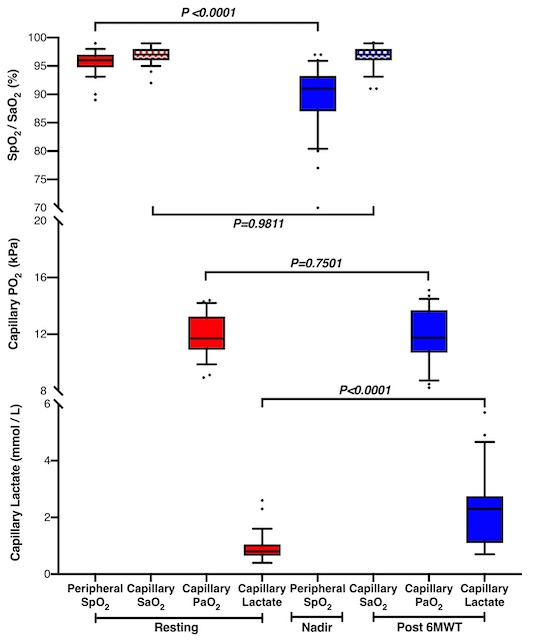Abstract
An estimated 2% of the UK population are affected by a post-COVID syndrome with symptoms persisting beyond 12 weeks but there is a paucity of data on exercise-related physiological parameters.
We used a m-6MWT with pre- and post-test earlobe capillary blood gases (CBGs) to investigate oxygen desaturation and reduced exercise capacity.
Our clinic reviewed patients following hospital discharge or community referral. Clinical assessment included a m-6MWT with continuous measurement of index finger-SpO2 and heart rate (HR) during resting, testing, and recovery phases, as well as pre- and post-test earlobe CBGs. Blood pressure (BP), HR, and dyspnoea and fatigue Borg scores were recorded.
87 patients were included; median distance walked (6MWD%) was 101% predicted [IQR 80-114]. Median SpO2 dropped from 96% [IQR 95-97] to a nadir of 91% [IQR 87-93] recovering post-test to 95% [IQR 94-96]. Median resting dyspnoea and fatigue modified Borg scores were 1 [IQR 0-1] and 0 [IQR 0-2] respectively increasing to 4 [IQR 2-6] and 3 [IQR 0-6] post-test. Despite no significant drop in capillary pO2 at rest and test completion blood lactate increased by 1.5 mmol/L (P<0.0001) (Figure 1).
Blood lactate levels varied amongst patients and was not effort dependent. Further work is required to understand the physiology of this heterogenous response which could help inform individual rehabilitation programmes in this cohort.
